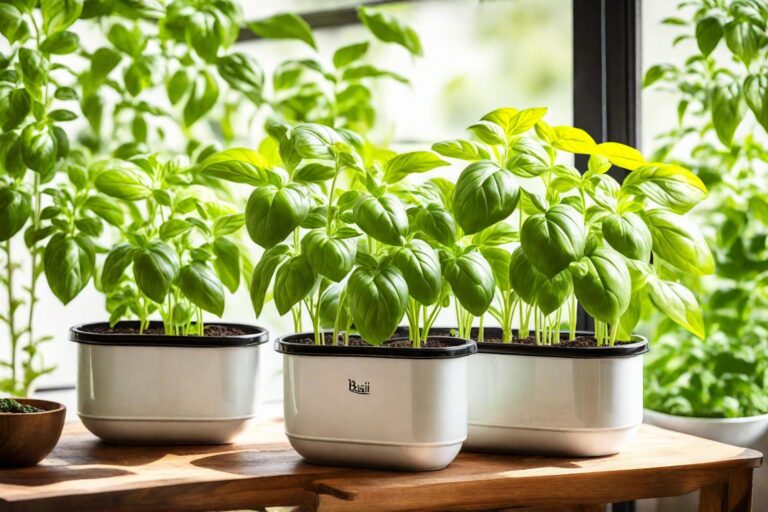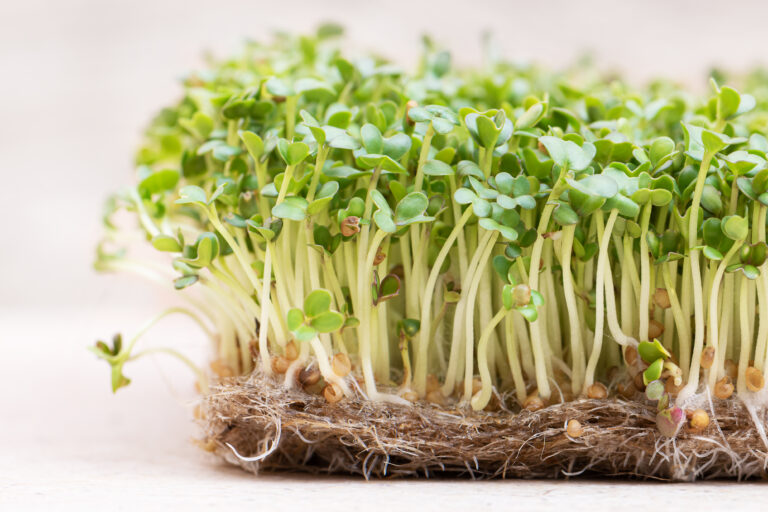Sustainable herb gardening ingredients and procedure:
Explore the essentials of best sustainable herb gardening—uncover soil enrichment, sustainable water conservation, natural pest management, composting sunlight, shelter and more. Start your eco-friendly journey to cultivating thriving herb gardens sustainably.
Introduction:
Sustainable herb gardening is more than cultivating plants—it’s a harmonious approach to nurturing herbs while respecting the environment. It’s about fostering a garden ecosystem that thrives naturally, minimizing ecological impact. Embracing sustainable practices, from soil enrichment to water conservation and natural pest control, ensures a greener, healthier future for both herbs and the planet.
The importance of best sustainable herb gardening extends far beyond mere cultivation. It’s a commitment to preserving biodiversity, minimizing chemical intervention, and fostering a balanced ecosystem. Embracing these practices not only yields healthy, flavorful herbs but also contributes to environmental conservation, promoting a more sustainable and resilient world.
Understanding sustainable herb gardening:
Sustainable herb gardening embodies a philosophy that transcends mere cultivation; it’s a holistic approach that honors the delicate balance of nature. It’s about nurturing herbs while preserving ecosystems, striving for harmony between plant growth and environmental well-being. This essence revolves around practices that minimize waste, conserve resources, and foster an ecosystem that thrives in its own rhythm.
Benefits of Sustainable Gardening:
Embracing sustainability in herb gardening yields multifaceted advantages. It not only promotes healthier plants but also minimizes environmental impact. From reducing chemical usage to fostering biodiversity and conserving water, the benefits are far-reaching. Sustainable practices also yield high-quality produce while fostering a deeper connection between gardeners and nature, enriching both physical health and mental well-being.
Integrating Sustainability into Modern Gardening:
In modern gardening, integrating sustainability is paramount. It’s about recognizing the impact of our actions on the environment and adopting practices that are mindful of ecological footprints. This integration involves utilizing renewable resources, minimizing waste, and embracing innovation to create gardens that thrive while being gentle on the planet.
Principles of Sustainable Herb Cultivation:
Sustainable herb gardening revolves around key principles that guide ethical and eco-conscious practices. These principles include optimizing soil health, prioritizing organic methods, conserving water through efficient irrigation, supporting natural pest control, and respecting seasonal rhythms. Embracing these principles ensures a balanced, thriving herb garden while minimizing negative impacts on the environment.
Ingredients for sustainable herb gardening:
Quality soil:
Quality soil isn’t just about its physical structure; it’s a bustling ecosystem. Beneath the surface lies a vibrant community of microorganisms—beneficial bacteria, fungi, and earthworms—that work tirelessly to break down organic matter. This decomposition process releases vital nutrients that herbs depend on for growth. A balanced pH level, good drainage, and aeration are crucial for healthy root development, ensuring your herbs thrive.
Optimal Plant Selection:
Choosing the right herbs involves considering their adaptability to your local climate and soil conditions. Native or locally adapted herbs are like garden ambassadors, deeply rooted in the ecosystem, attracting beneficial insects and birds. Understanding each herb’s growth habits and preferred conditions fosters a garden where plants support each other naturally, reducing the need for excessive interventions.
Water Conservation Techniques:
Efficient water use in herb gardening involves employing strategies like mulching, drip irrigation, or rainwater harvesting. Mulching acts as a moisture blanket, preventing water evaporation and weed growth. Drip irrigation systems deliver water directly to the roots, minimizing waste. By understanding your herbs’ water needs and using these techniques, you conserve water while ensuring your herbs receive adequate hydration.
Natural Pest Management:
Managing pests naturally involves fostering a biodiverse environment where pests have natural adversaries. Beneficial insects, like ladybugs or praying mantises, serve as garden protectors by preying on pests. Companion planting with herbs that repel pests or attract beneficial insects forms a self-sustaining ecosystem. This approach safeguards your herbs without disrupting the garden’s delicate balance.
Composting: Enriching Soil, Reducing Waste:
Composting is nature’s recycling system, turning organic waste into nutrient-rich soil amendments. It’s a microbial symphony where bacteria and fungi transform kitchen scraps and yard debris into black gold. This organic matter not only feeds your herbs but also improves soil structure, enhances moisture retention, and promotes a healthy soil biome—a true testament to sustainable gardening.
Sunlight and Shelter:
Sunlight dictates the herb’s energy source, while shelter shields them from harsh weather elements. Understanding your herbs’ sunlight needs and providing protection during extreme weather ensures their well-being. It’s about creating an environment where herbs thrive naturally, optimizing their growth conditions for a flourishing garden.

Procedure for sustainable herb gardening:
Selecting an Ideal Garden Site:
Finding the perfect spot for your herb garden involves more than just a sunny patch. Consider the microclimates in your yard, understanding how certain areas may be warmer or cooler than others. Explore the contours of your landscape, noting areas with good drainage versus those prone to waterlogging. By picking a site that suits your herbs’ preferences, you create an environment where they’ll thrive effortlessly.
Preparing the Soil for Planting
Soil preparation is akin to creating a welcoming home for your herbs. It’s not just about digging; it’s about nurturing. Understand the composition of your soil—its texture, pH levels, and nutrient content. Enrich it with organic matter, creating a nutritious buffet for your herbs’ roots. By providing a fertile foundation, you’re setting the stage for healthy growth and bountiful harvests.
Effective Planting Techniques:
Planting herbs isn’t just a task; it’s an art. Pay attention to each herb’s needs—spacing them appropriately, considering their growth habits, and grouping those with similar requirements. This thoughtful approach mimics nature’s harmony, fostering an ecosystem where herbs support each other’s growth and well-being.
Sustainable Watering Methods
Water, the elixir of life for your herbs, demands mindful handling. Consider using rain barrels to capture nature’s gift or installing moisture sensors to gauge your garden’s thirst accurately. Exploring innovative watering systems not only conserves water but also ensures your herbs receive the hydration they need at the right time, promoting lush and healthy growth.
Organic Pest Control Measures:
When pests come knocking, invite nature’s warriors into your garden. Introducing beneficial insects like ladybugs or planting companion plants that repel pests acts as a natural defense system. It’s about creating a diverse ecosystem where predators keep the unwanted guests in check, safeguarding your herbs without harsh chemicals.
Seasonal Care Guidelines:
Each season brings its own rhythm to your garden. Embrace these seasonal shifts by pruning in spring to stimulate growth, mulching in summer to conserve moisture, sowing cover crops in fall to enrich the soil, and providing winter protection for delicate herbs. Adapting your care routine to nature’s cycles ensures your herbs flourish year-round.

enhancing sustainability in herb gardens:
Embracing Companion Planting Techniques
Companion planting is like hosting a garden party where herbs invite friends that complement and support each other. It’s about strategically placing herbs and other plants that benefit each other—some repel pests, others attract pollinators, while some enhance nutrient absorption. This technique creates a thriving ecosystem where plants interact harmoniously, fostering healthier and more resilient herbs.
The Significance of Mulching
Mulching is akin to giving your garden a cozy blanket. It’s about covering the soil with materials like straw, leaves, or compost to conserve moisture, regulate temperature, and suppress weeds. This protective layer not only nurtures your herbs by providing a stable environment but also promotes soil health, fostering a habitat for beneficial microorganisms.
DIY Organic Fertilizers for Growth
Creating your organic fertilizers is like preparing a nourishing meal for your herbs. It involves recycling kitchen scraps, composting yard waste, or brewing compost teas to provide a nutrient-rich boost. By concocting these homemade elixirs, you’re not just feeding your herbs; you’re enriching the soil organically, promoting robust growth and flavor.
Importance of crop rotation:
Crop rotation is nature’s dance, a choreography that ensures the soil remains fertile and pest-free. It’s about shifting herb varieties across different areas in your garden each season. This practice helps balance soil nutrients, prevents disease buildup, and breaks pest cycles, fostering healthy herbs and sustaining the vitality of your garden year after year.
Managing Garden Waste Sustainably
Managing garden waste isn’t just about tidying up; it’s a resourceful endeavor. Consider composting green waste, recycling plant residues, or using fallen leaves as mulch. By managing waste sustainably, you’re closing the loop, transforming scraps into valuable resources that enrich your garden’s soil and reduce environmental impact.
Conclusion:
Embarking on a sustainable herb gardening journey isn’t merely about growing herbs; it’s a commitment to nurturing our planet. By embracing sustainable practices—be it soil enrichment, water conservation, natural pest management, or resourceful waste utilization—we contribute to a healthier environment. Sustainable herb gardening isn’t just a hobby; it’s a meaningful step towards preserving nature’s balance and fostering a greener, more sustainable future.
Let these outlined ingredients and procedures serve as your compass on the path to sustainable herb gardening. Dive into this enriching journey, experiment, and explore the wonders of nurturing herbs in harmony with nature. Whether you have a sprawling garden or a cozy balcony, sustainable herb gardening is an opportunity to connect with nature, savor fresh produce, and play a role in creating a more sustainable world—one herb at a time.




One Comment